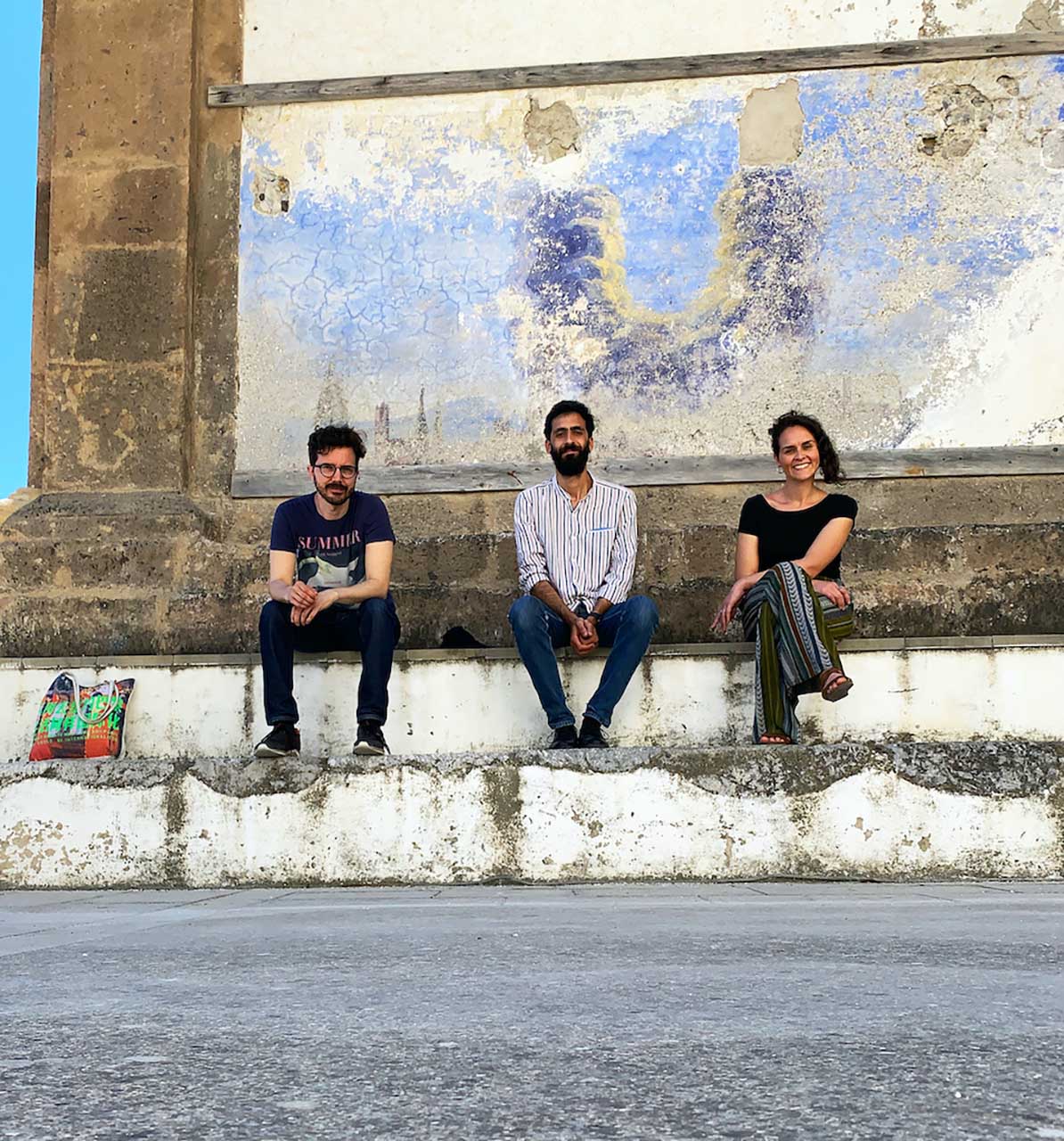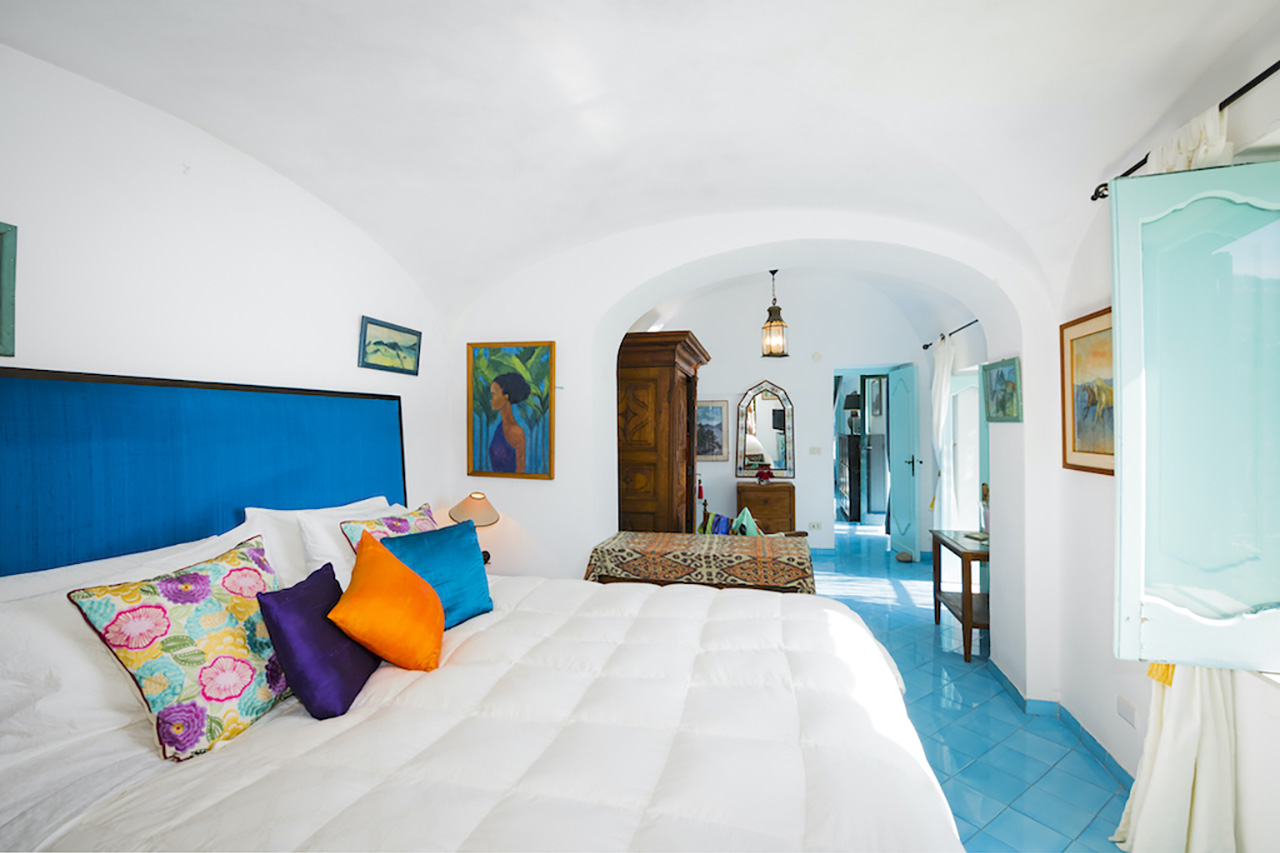Launched by Imma Tralli and Roberto Pontecorvo, the new national and international art residencies project puts art at the center of relationships.
January 21st, 2022. By Anna Volpicelli
It was a project on their minds since they met six years ago in Brussels. In a European city in a whole cultural ferment, constantly surrounded by artists with whom to exchange reflections on art and culture, Imma Tralli, a 30-year-old art historian from Matera, and Roberto Pontecorvo, a 31-year-old from Praiano, with a degree in International Relations and co-creator of Praiano NaturArte, planted in their heads the first seed of Marea Art Project, the new and innovative project of Italian art residencies and international on the Amalfi Coast.
“From the moment we met, we discovered that we shared the same passions,” says Imma Tralli. “It was nice always to be surrounded by artists and musicians, to feel part of something even in such big cities. When we tried to get closer to the Coast, we thought of bringing everything we lived and felt in the years we spent abroad, which in addition to Brussels, included cities like Madrid and part of Latin America, here.”
In the footsteps of the glorious past
Joining the pair of young creatives was Stefano Collicelli Cagol, researcher and curator and currently director of the Luigi Pecci Center for Contemporary Art in Prato, one of the largest institutions in the national art world. “With Marea Art Project – explains Pontecorvo – we are retracing in the Amalfi Coast a history that has been interrupted. From the beginning of the 1900s until the 1980s-1990s, this area has hosted artists worldwide. They landed on the Coast to find refuge. There they lived in close contact with the local community.”
In the past, the Amalfi Coast has been a crossroads for writers, musicians, and painters who found the right environment to reconnect to their sensibilities, renew them, and find new inspiration to create. From Virginia Woolf and the members of the Bloomsbury Group, who constantly met at the gardens of Villa Cimbrone, to Richard Wagner, who in Ravello found his creative lymph to compose his music, to Escher, who portrayed Atrani in one of his works. “With Marea Art Project, we have not created anything new, if not redesign a stimulating environment for the community, for tourists and try to establish a dialogue between two points that at this time communicate little, that is, the inside and the outside, through art,” emphasizes Imma.

The key to everything: research
Currently, the residency process is by invitation. The artists are selected directly by Stefano Collicelli Cagol, with the participation of Imma and Roberto. “In this first phase, what interests us is the experimentation and research that then translates into the creation of the territory. To make this research process more interesting, we relied on Stefano. Besides being one of the most important curators in the Italian art scene (he was curator of the Quadriennale d’arte 2020 FUORI in Rome, ed), he is a great researcher. Through his and the artists’ help, we intend to bring the Coast back to the center of experimental art. And by that, we mean music, writing, cinema, etc.”
Marea 21
The first residency, Marea 21, brought to the Amalfi Coast Giulia Crispiani, a writer and visual artist from Ancona, Michele Bertolino, an independent curator and researcher from Savigliano, and Ciro Apicella, a director from Vico Equense who now lives in Los Angeles.
During the residency, Apicella shot a documentary to capture everything in close dialogue with Giulia and Michele. “The focus of the residencies will be on the final artwork, of course, but mainly on the creative process. For us, the artistic process is also fundamental because this is where the relationship with the community comes into play, the dialogue with the territory and its difficulties and limitations, which those who live here know very well,” explains Tralli.

The Houses
Two significant villas will host the artists. The first is Casa L’Orto, home of American conceptual artist Sol Lewitt. Casa L’Orto was built in 1700 by the ancestors of Carol LeWitt, the artist’s wife. It is located near Torre a Mare in Praiano, where the couple lived at the beginning of the ’70s. A house museum where Lewitt could design two large interior murals that he never saw realized due to his death. With the mission of opening this house to passing artists, LeWitt restored the space by creating an organic vegetable garden arranged along the thirteen terraces surrounding the house and from which it takes its name.
The second one is Casa Tuti, owned by Sandra Belcredi, a few meters from Via Masa, the historic street of fishermen, and the beach Gavitella. “It was Sandra who made her house available for the project without asking us anything in return – Roberto tells us – One day, she called us asking to meet her for a coffee because she wanted to talk to us. When we met, she told us that she would have offered hers if we needed another residence. It was very emotional and unexpected. She told us that when she lived in Rome, she was used to surrounding herself with artists, and the idea of being able to do it here seemed like a great opportunity”.
In her first residence, Casa Tuti, she hosted Ciro Apicella. “A great friendship was born between Sandra and Ciro. We often met during the months spent together and spent entire evenings chatting in front of the fireplace. Marea Art Project is also this: rediscovering the relationship, returning to a human dimension, where at the center is the enrichment that only art and culture can give.” The young cultural managers hope to expand the residences to the entire Coast, not only Praiano, but also find solutions to extend the hospitality to Amalfi, Ravello, Positano, and the whole territory.
Present and future
The result of this first experience, Marea 21, will be the publication of the book “Sunrise and Sunset in Praiano,” a tribute to the book “Sunrise and Sunset at Praiano” by Sol LeWitt, published in 1980. About the book, Marea Art Project’s blog reads, “Compared to Sol Lewitt’s book, the preposition at becomes in because in Praiano time is a slow time, a slowness both of the clock and physical that makes you lose your bearings. The idea of the book is to pay homage to observe the sky and the sea and giving instructions, a practice proper to conceptual art”.
The second residency will open between March and April of 2022, hosting writing artists. “Art is a pause to the pain of life,” says Tralli, quoting a phrase by Paolo Sandulli, a famous local artist. And it is this concept that explains well the extraordinary immersion that Marea Art Project wants to offer: a happy pause, a suspension that welcomes the beauties of life, even if sometimes challenging, in which to meet, know each other and grow together through art, its exchange and its human return to the territory.
